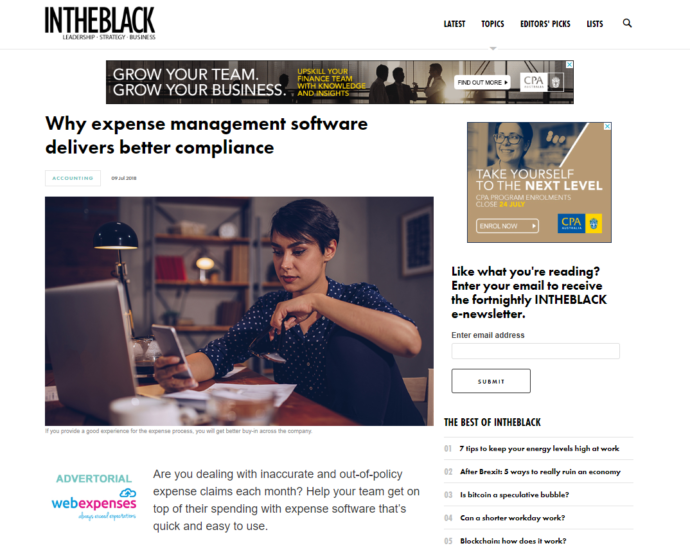Expense Management: What’s the future for paper receipts?
One of the earliest recorded examples of writing dates back more than 5,000 years - it’s a shopping receipt. Written on a clay tablet in ancient cuneiform, it lists various items of clothing shipped by boat from Mesopotamia to Dilmun.
While stone tablets have since been replaced with paper chits, this remains the primary method we use to document the sale of goods and the provision of services. In the UK alone, around 11.2 billion paper receipts are issued each year.
For finance professionals, tasked with managing employee expenses, it creates the headache of having to handle the mass of paper receipts which come attached to each claim form.
It causes a kind of organisational ‘treacle’ as large volumes of paper are physically shuffled around an organisation. With a digital equivalent, any information can be created, shared and stored instantly.
So with the speed and efficiency advantages of digital, how much longer will we still be reliant on crumpled pieces of paper? And how will any changes impact on the world of expense management?
Nothing New
The move towards digital receipts is nothing new, it’s something Apple has been offering for over a decade. In 2005, they became the first major retailer to allow customers to receive an ‘electronic receipt’, with payment details sent to their email address.
And since then companies have been tentatively exploring different ways to replace paper receipts with a digital equivalent. The UK supermarket chain, Tesco, has recently launched trials of a contactless system. After a customer pays at the checkout, they tap their debit or credit card on a terminal which sends a digital receipt to a store smartphone app.
In the US, CVS pharmacy has recently rolled out digital receipts and they’re also being used by Australian ridesharing service, Limofied. It’s a trend which is only likely to increase with retailers keen to reduce paper costs and find smarter ways to connect with customers.
For the time being, however, the majority of these services remain optional with paper receipts still provided for those who don’t want to make the switch.
Consumer Caution
Consumers are understandably cautious whenever asked to provide personal information to companies because of the fear that any data they share could be used for marketing purposes.
There is also the problem of customers facing a potential myriad of different systems and storage methods. While a paper receipt can be easily popped into a wallet or purse, the digital equivalent may not be so easy.
The Tesco trial is an example of a system which locks information into a specific app. If each retailer followed this path, it would make collating information a painful process.
This would be particularly problematic for expense management with employees having to try and retrieve information from multiple sources and in a variety of different digital formats.
Interim Solution
A digital expense management system such as webexpenses is future proofed to handle just about any kind of digital receipts. It allows an electronic receipt to be emailed directly into the user's webexpenses account.
It’s also able to handle a wide variety of digital formats, whether it’s a PDF, a Word document or any kind of image file.
But while the majority of receipts are still provided in paper form, systems such as webexpenses have found an effective middle-ground solution. By providing employees with a smartphone app, they can instantly convert any paper receipt they receive into a digital format.
It virtually removes the need for any paper-based processes. And these digital copies are treated no differently by the tax authorities to the paper originals, the only proviso being that text is legible and the image contains all the same information as the paper version.
Digital Future?
Ultimately, it would seem only a matter of time before somebody devises a digital system of managing receipts which will find widespread acceptance and finally remove our reliance on those paper receipts.
For retailers it offers reduced costs and the ability to connect with customers in new ways, combining receipt information with loyalty schemes and promotions. But in the meantime, our finance teams have an effective interim solution - one which provides employees with the simplicity of picking up a paper receipt and finance teams with the speed and efficiency of managing digital data.
You can find out for yourself how webexpenses helps to tame the problem of paper receipts by taking the system for a trial, here.






